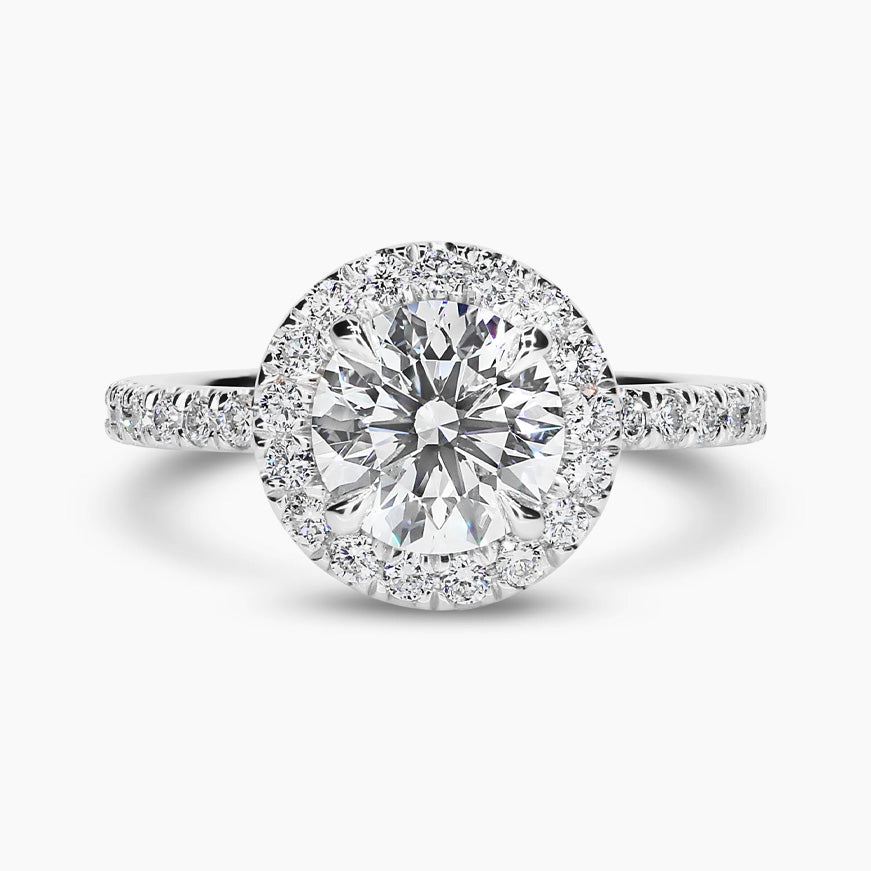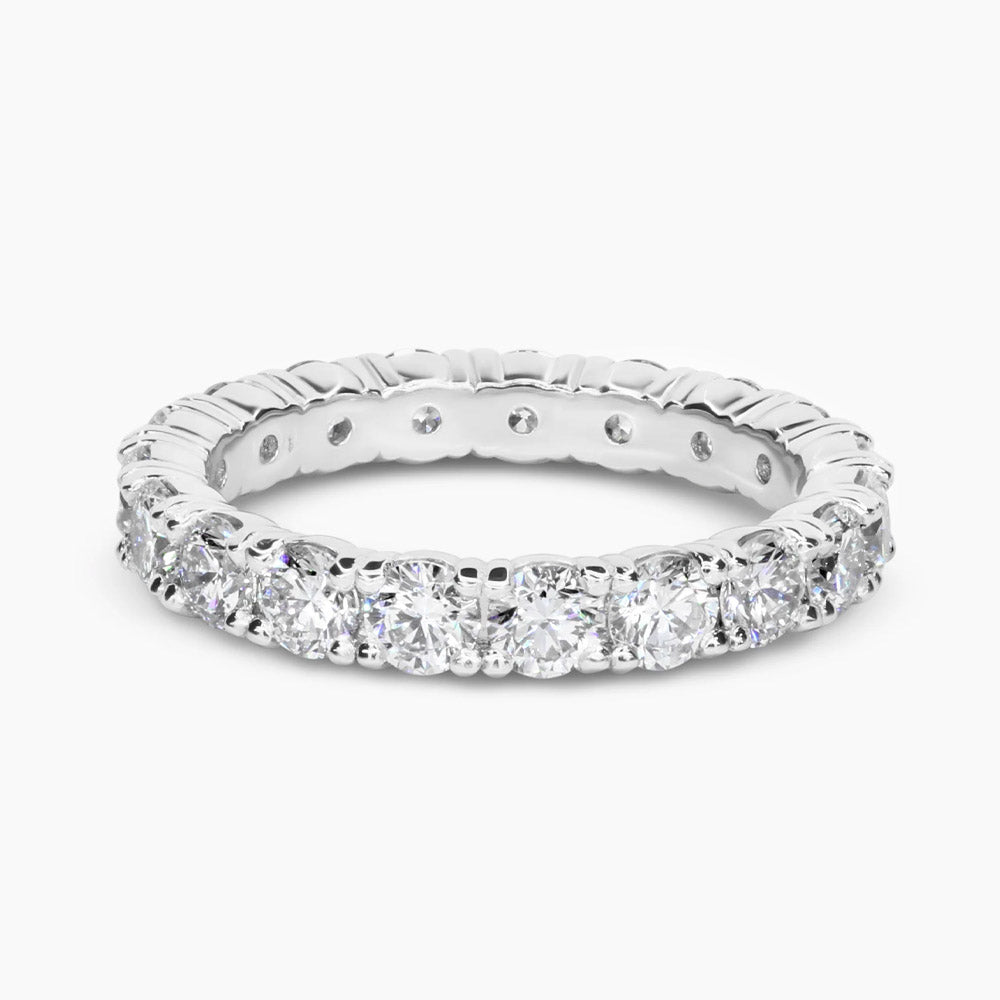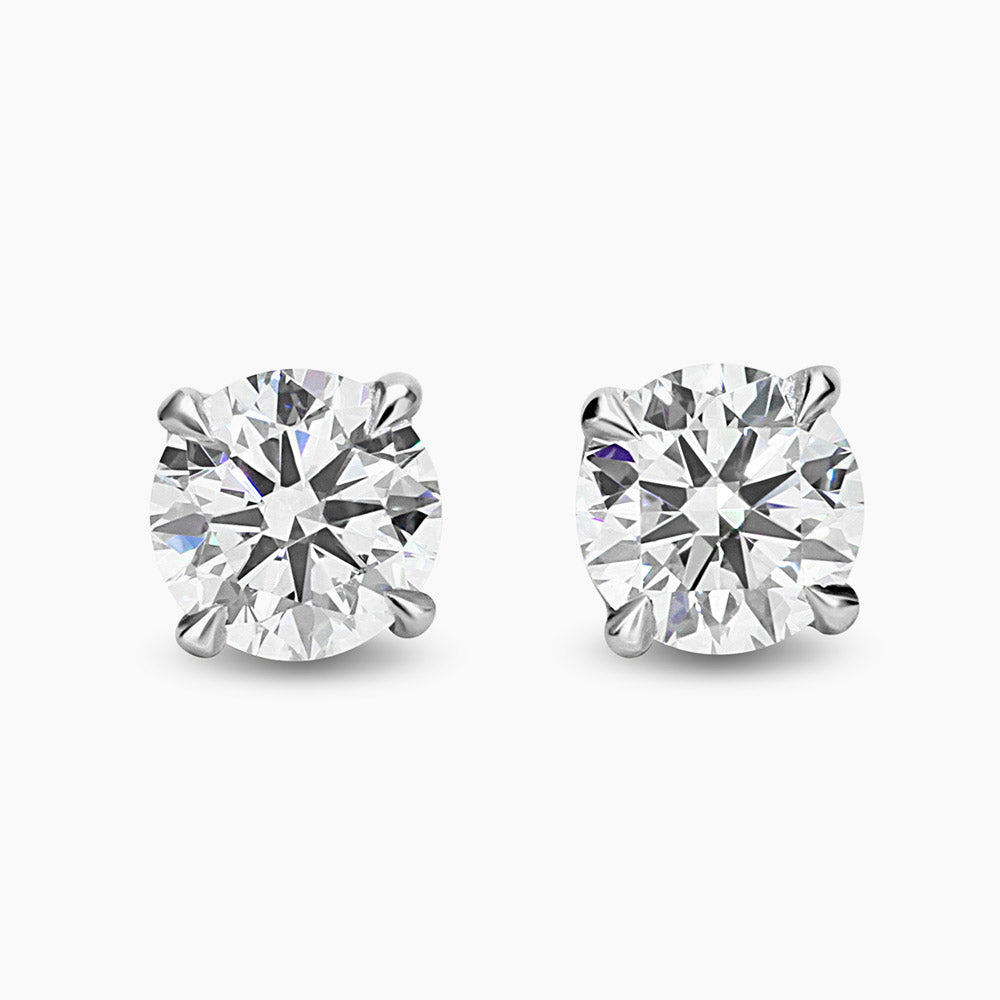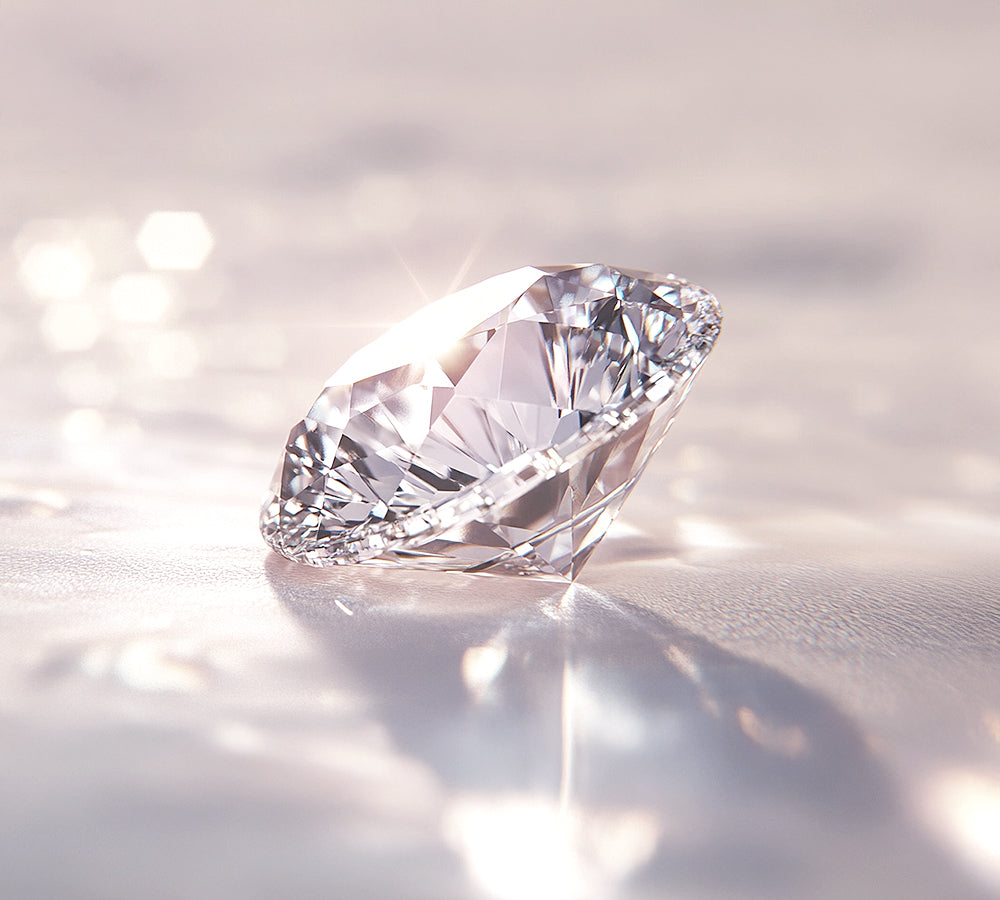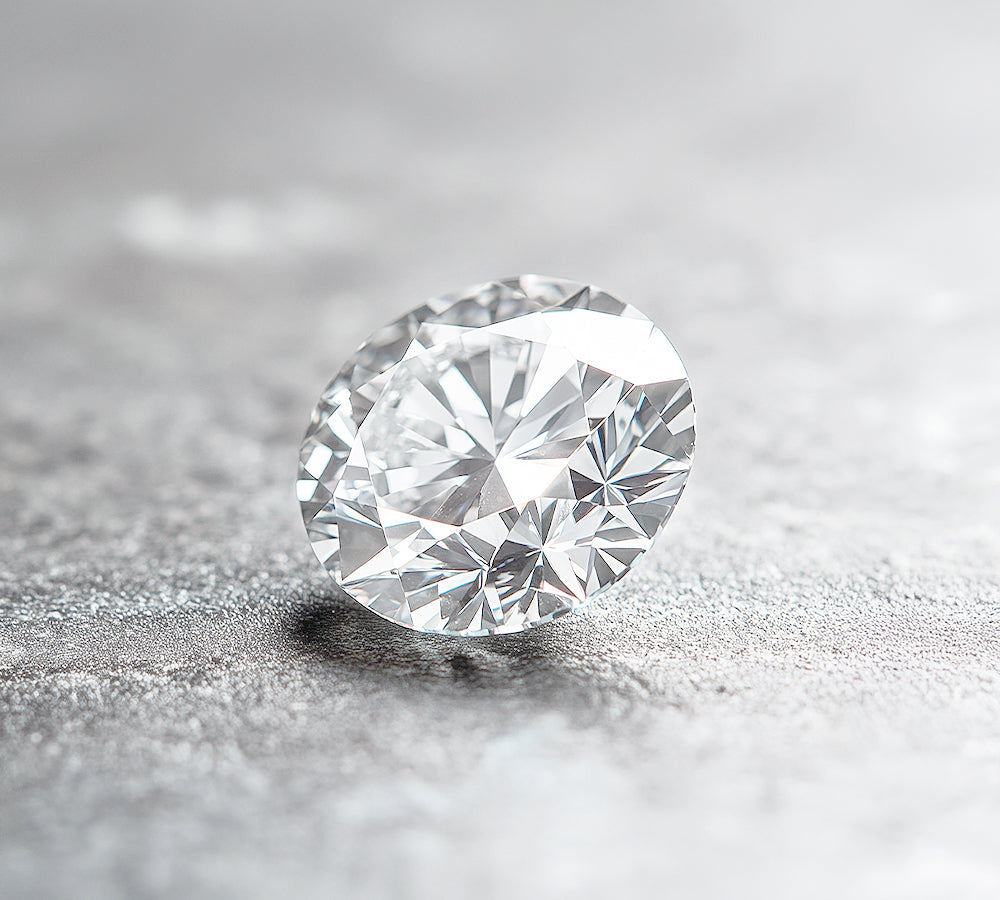Creating aesthetically beautiful diamonds requires designing and engineering round cut diamonds with different facet arrangements, and being able to scientifically compare their light performance outcomes. There are several performance and aesthetic limitations associated with the traditional round brilliant cut design that are inherent to the faceting arrangement and light flow architecture of the Round Brilliant Cut. It is important to note even with these limitations the traditional 58 facet round brilliant cut model still remains substantially more brilliant and optically superior than any other fancy shape cut diamond.
It is in Tolkowsky’s spirit of progress and refinement that we put forth the following observations of the limitations of the traditional round diamond.
-
Limitation of Optical efficiency: The model was concerned primarily with light rays entering and exiting the diamond but not with the optical activities and interactions that the light rays undergo while traveling within the diamond. Simply put, the design did not focus on maximizing the internal dispersion, light path distance, and light ray facet interactions which are all important factors in producing fire and brilliance. This oversight of the internal light wave dynamics of the diamond significantly limited the optical efficiency that a round diamond is capable of achieving.
-
Limitation of the Two-Dimensional Model: The Tolkowsky model was based on a 2-d model that ignores the contributions and significance of half the diamond’s facets; primarily, the star, upper girdle, and lower girdle facets. A diamond is a three dimensional reflecting and refracting solid. The light flow movement within a three-dimensional entity is very different than in a two-dimensional object. Since every facet and facet junction can change the direction of light rays, neglecting to consider their impact can limit the maximization of their quantum value and the accuracy of the model.
- Macro light flow pattern: The traditional model focused on the prevention of light loss through the bottom of the diamond but not on the Light Flow Architecture of the returned light. Therefore, the macro light flow pattern of the traditional round brilliant cut displays distinct, open, under-performing zones adjacent to brilliant active surfaces. Furthermore, the distribution of sparkle, white light, and color light are generally sporadic and uneven.
Today, these problems can be fixed due to a new understanding of light dynamics, quantum mechanics, light interactions with reflective and refractive solids, and the availability of advanced technological tools such as computers, photometers, spectrophotometers, and three dimensional metrology devices. Diamond cutters are now poised to determine and validate the faceting arrangements and proportion parameters of a new round brilliant cut model with superior optical efficiency and improved aesthetics.
The Diamond Industry Dilemma
Tolkowsky’s model has been accepted for over eighty years and is still being used, mainly, because no one believed it could be improved. Since then Man has achieved such technological wonders such as traveling to the moon, and yet the light performance of the round diamond has remained the same. Additionally, most manufacturing methods are conveniently set to cut this model. A V2 motor engine with perfect efficiency will still never match the power of a good V8 engine. Although the old 58-facet model is good, it is built upon outdated assumptions. Therefore, it is still just a V2 engine that needs to be overhauled. No matter how perfectly and precisely a diamond is cut, if its faceting arrangement inherently has limitations that would limit its internal light flow, white light return, color light return, and scintillation, then it can never match the performance of another cut model that does not have those limitations.
Having a diamond perfectly cut is not an assurance of ultimate brilliance for that shape; it only means optimal performance for that particular faceting arrangement model. Therefore, it is the light management configuration (the reception of external light and the redirection of all incidents, reflected and refracted rays) known as faceting arrangement, combined with proper proportions and perfect precision cutting that leads to the most optimal performance for that shape. However, the diamond industry is slow to change. Most would rather keep cutting the same old 58-facet model and keep trying to improve this model's light performance by losing more weight from the rough material with little or no observable gain.


